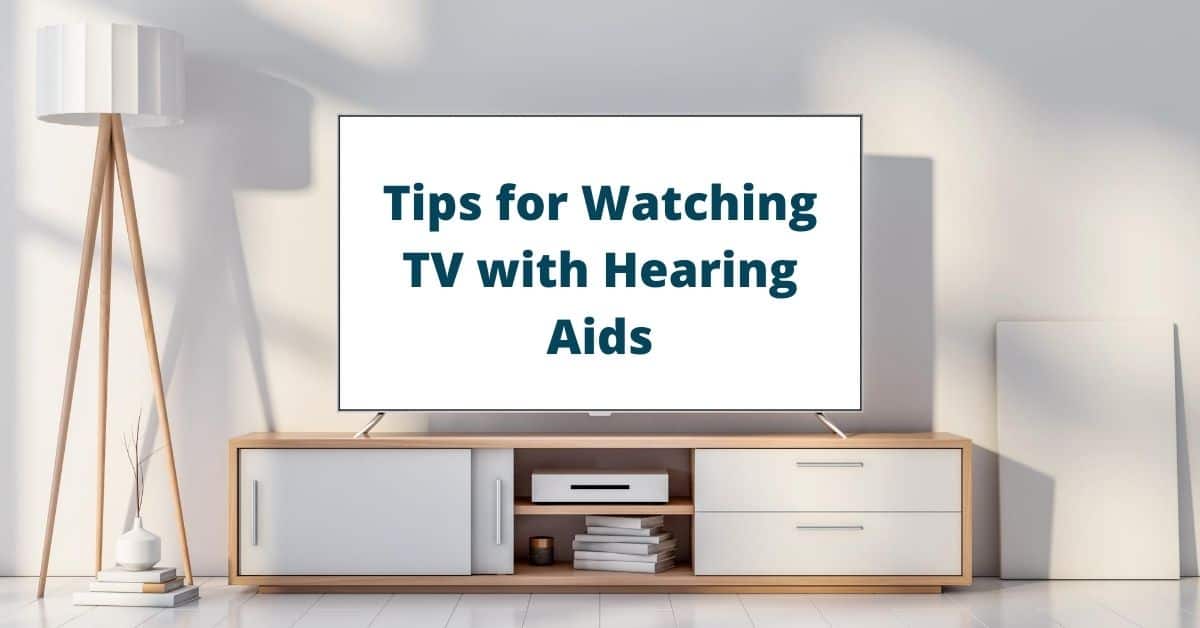- Volunteering for Hearing Health Causes - May 27, 2025
- Questions to Ask During Your Hearing Health Appointment - May 16, 2025
- Exploring Alternative Therapies for Hearing Loss - May 6, 2025
If you have hearing loss, you’re not alone. Almost 50 million Americans of all ages have hearing loss! Hearing loss makes it hard to follow conversations, whether you’re in your living room or in a crowded restaurant. You’ll also notice that hearing loss makes it harder to hear the TV. Your family may complain that the volume is far too loud, but you still can’t make out what’s being said. We want you to enjoy watching TV with your loved ones, so follow these tips for watching TV with hearing aids.
Turn it Down!
When you’re struggling to hear the TV, you instinctively reach for the remote control and turn up the volume. Our first tip for watching TV with hearing aids is to turn the volume back down. Your family complains that it hurts their ears, and even though you still can’t hear clearly, the high volume is hurting your ears too. Turning up the volume doesn’t make the sounds clearer or easier to understand, and the loud volume can actually damage your hearing.
Get the Right Speakers
One solution for watching TV with hearing aids is to get the right speakers. High quality speakers will increase the clarity of sounds, making it easier for you to follow on-screen conversations. These speakers deliver better sound quality than the TV sound system, helping you watch your favorite shows without turning up the volume.
TV Headphones
One great solution for watching TV is to get TV headphones. This is an assistive listening device that will make it easy to hear the TV. The headphones come with a transmitter device that you plug into the TV. This will stream the TV audio to the headphones, helping you hear everything that’s being said. You’ll be able to adjust the volume to safe levels, and even make adjustments to the tone so you can hear more easily. Most TV headphones can be worn over your hearing aids, so you can still run your favorite hearing aid programs to help you hear.
Some of these assistive listening devices can support more than one set of headphones. You can watch TV with your spouse, and you can each wear headphones to stream the audio right to your ears.
Connectivity Features
If you spend a lot of time watching TV, talking on the phone, or using technology, you can get hearing aids with great connectivity features. These hearing aids use Bluetooth technology to connect directly to your phone, your computer, and even your TV. Your hearing aids will turn into wireless headphones, playing the TV audio right to your ears so you can catch every word that’s said on-screen. Depending on your TV, you may need to get a transmitter to plug into your TV to enable this connection.
When you watch TV with your Bluetooth enabled hearing aids, you can enjoy watching TV with the whole family! Let your family set the volume that’s best for them, and control your own volume using your hearing aids. You can control your personal settings using your hearing aid app on your phone and adjust the volume and tone to make it easy to hear.
Use Subtitles
When you watch TV with hearing aids, it’s a great idea to use subtitles. You don’t need to turn up the volume or strain to hear what’s being said. If you miss a word here and there, you can read what’s being said, and hear without getting frustrated. Most TVs have closed captioning settings to provide subtitles for every program. Look for a CC button on your TV remote to switch on the subtitles, or find the closed captioning settings in the TV menu.
Hearing Aids Help You Hear
Do you have hearing loss? If you’ve been straining to hear the TV and getting frustrated that you can’t hear, it’s time to find the perfect hearing aids for watching TV. Hearing aids help you focus on the sounds you want to hear by reducing distracting background sounds, such as someone making noise in another room. Hearing aids also use speech enhancement technology to bring more clarity to speech, both in person and on the TV, making it easy to watch TV with hearing aids.

